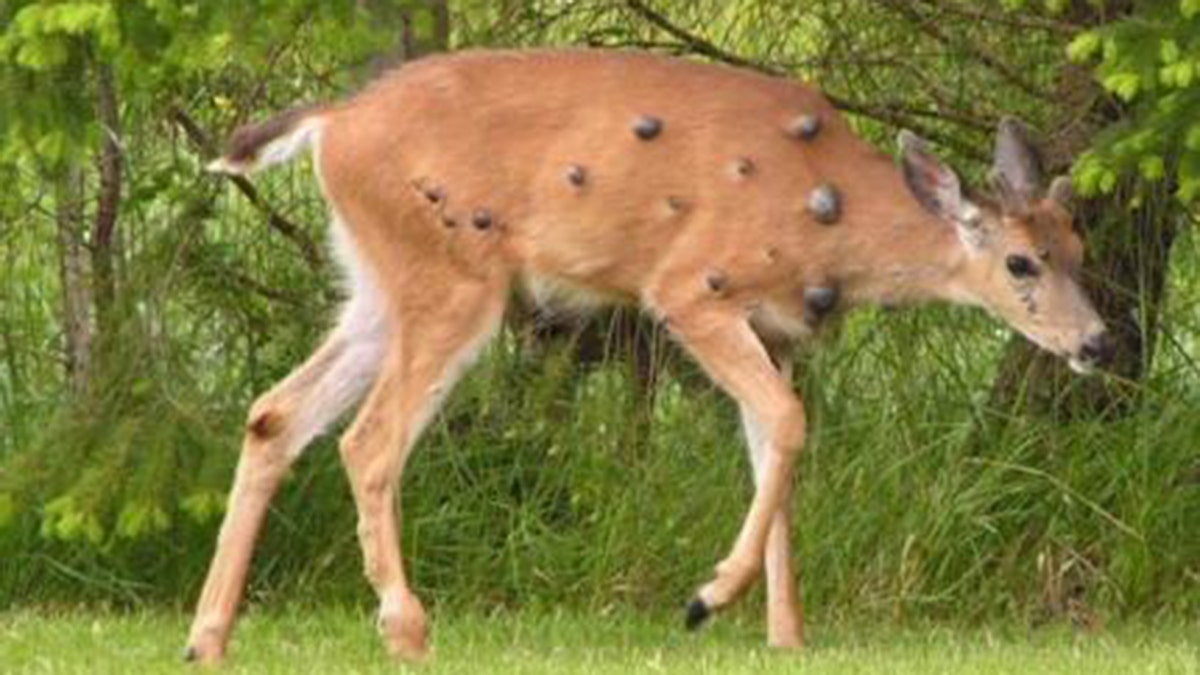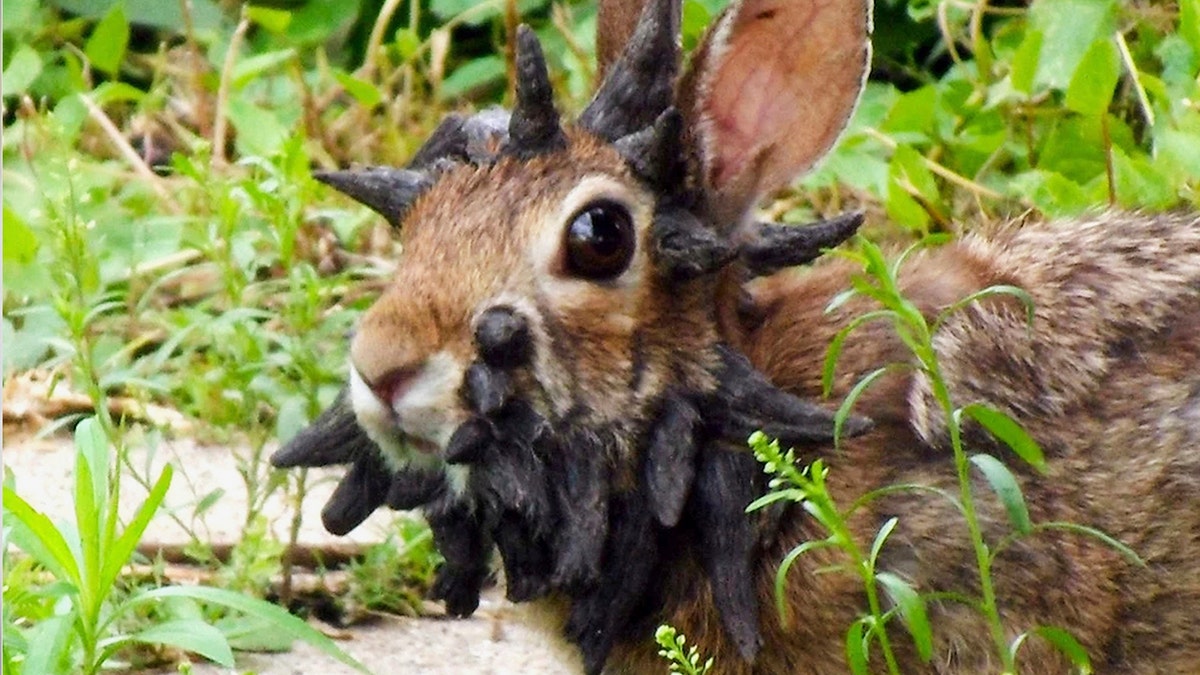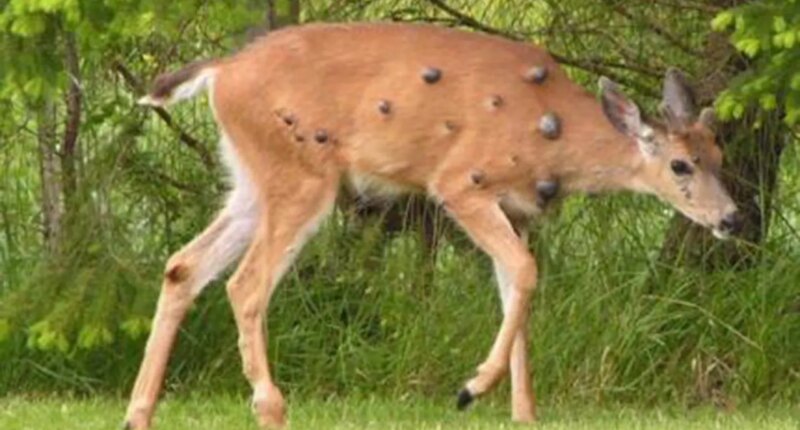Share this @internewscast.com
As photos of so-called “Frankenstein” rabbits and squirrels with strange growths on their heads and bodies have started to pop up on social media, users are now sharing pictures taken of deer with bulbous warts.
While the warts, or “fibromas” as they’re called, may look scary, they generally don’t affect the deer’s health unless the growths are around the eyes and mouth, hindering their ability to see and eat and making it harder to move, according to experts.
Deer fibromas are caused by an infection and are common in the U.S., the Maine Department of Inland Fisheries and Wildlife says on its website, adding that similar diseases affect squirrels and rabbits.

The warts are “firm, hairless, gray or black in color, can be smooth or rough in texture, as small as peas or as large as footballs, and may grow in clusters,” The Washington Department of Fish and Wildlife says on its website. (Washington Department of Fish and Wildlife)
The warts are “firm, hairless, gray or black in color, can be smooth or rough in texture, as small as peas or as large as footballs, and may grow in clusters,” The Washington Department of Fish and Wildlife says on its website.
The department added that the fibromas can be found anywhere on a deer’s body and they typically “will eventually outgrow their blood supply and fall off.”

A rabbit in Minnesota with a virus that makes horn-like nodules grow out of its head. (Gunnar Boettcher via AP, File)
Papillomaviruses spread in deer populations through insect bites, “direct contact, or sharing rubbing posts and bedding sites,” the department added, noting that the virus is most commonly seen in late summer to early fall “probably due to increased biting insect activity during this time of year.”

















